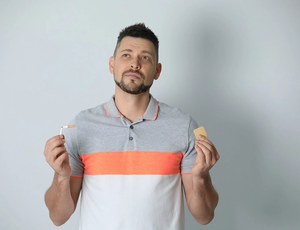
Easy Ways To Minimize Triggers When You’re Trying To Quit Smoking
Quit smoking aids are valuable to those of you who have decided to quit smoking or are trying to quit smoking. Nicotine replacement products help manage withdrawal symptoms by gradually decreasing your nicotine intake to lessen your dependence on it over time. However, you can still face challenges whenever you’re exposed to external factors that could potentially trigger your craving to start smoking again.
We map out strategies on how you can minimize these triggers when you’re trying to quit smoking.
Remove cigarettes from your home and workplace
The easiest way to get smoking out of your system completely is to throw away all the cigarettes and other tobacco products from your workplace, car, and home. Wash your clothes or anything that smells remotely like cigarette smoke. Remember: out of sight, out of mind!
Get regular exercise
A major trigger that can push you to find relief back to smoking is stress. Stress and anxiety can significantly increase your urge to smoke and derail you on your journey to quitting. A way to divert or to reverse your feelings of stress is to get regular exercise. Getting regular exercise can help your body release endorphins (happiness hormones), which can boost the overall positive feeling in the body.
Keep a journal
Refocusing can help you deal with your craving for smoking, and journaling is a helpful method you can try to take your mind off it and put your thoughts to paper.
First, write down all your reasons for quitting. Whether it’s improving your health, saving money or wanting to set a good example for your children, write them all down. This is so you can remind yourself of all the reasons why you decided to quit in the first place whenever the urge to smoke sets in. Quitting is never easy. Especially when many factors can hinder you from recovering. Keeping your feelings in check can help you navigate your way and help you on your journey to quitting.
Avoid smokers and designated smoking areas
Another way to minimize triggers is to recognize situations that will make you want to smoke and making a conscious decision to avoid them. These situations may include avoiding designated smoking areas outside establishments or buildings.
Alternatively, you can also hang out less with people who smoke. Practice saying, “No, thanks,” when they invite you. Spend more time with people who are non-smokers. Plan activities together with people who are also trying to quit smoking for you to get your mind off smoking.
Take on a new hobby
You may find yourself taking comfort solely from smoking. Though you may find it satisfying and enjoyable, smoking is an addictive habit that slowly eats your time and life away. The time you spend smoking is time you can never take back. To get back on track, find a new creative outlet that will allow you to spend your time more productively. Rediscover what your interests are and do it! Find a new hobby that stimulates you whether it be in the form of art, music, or dance. This will allow you to re-center your life and keep your life moving forward without needing to depend or seek pleasure from the habit.
Cope With Withdrawal Symptoms With NRT Products
One of the most daunting challenges when quitting smoking is addressing withdrawal symptoms. Withdrawal can increase your chances to crave for cigarette smoke. Once you stop smoking, you may experience physical symptoms such as tremors, insomnia, irritability, fatigue, and more. Don’t worry, because that’s just your body’s way of coping through the change. Though it’s unpleasant, it’s important to remember that these symptoms are only temporary.
An excellent way to help you manage withdrawal symptoms and cigarette cravings is by taking NRT products or quit smoking aids. Kea Heath provides the best-value nicotine replacement therapy products (nicotine gum, lozenges, patches) straight to your door. Let’s help you quit smoking today—shop all quit smoking products online at Kea Health!
Related Article






